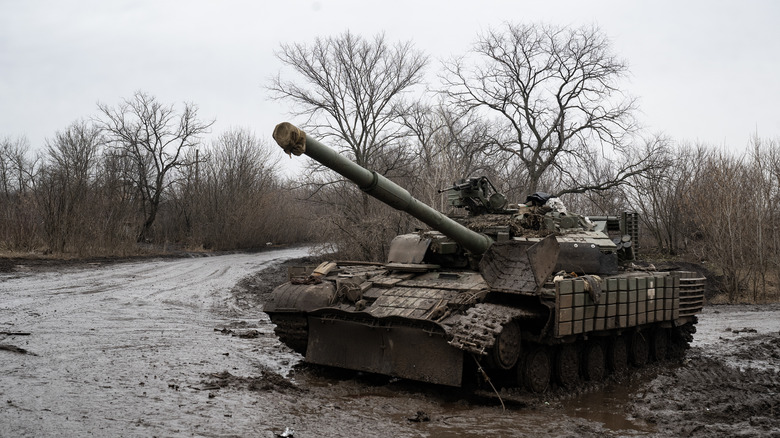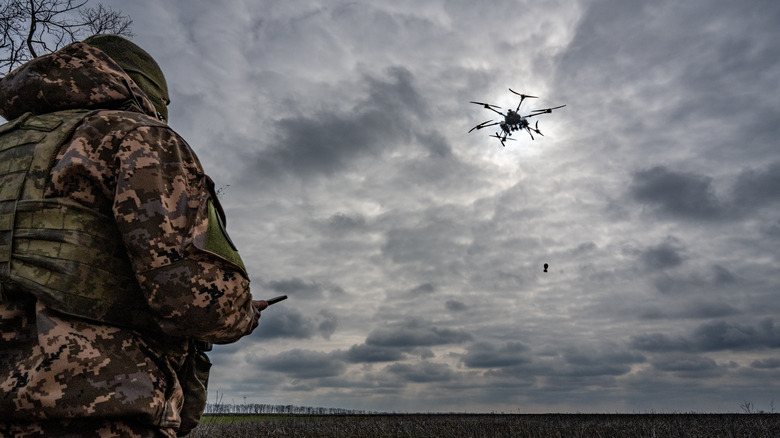Russian Turtle Tanks: What Are They & Why Do They Look The Way They Do?
The turtle is not exactly the most ferocious of reptiles, and so calling a tank a "turtle" doesn't seem like it would inspire fear in the hearts of your enemies on a battlefield. Which is why it's not the Russian army that gave their new brand of oddly-armored tanks that name, it's everyone else online who did, as Newsweek reports. But when a tank has what appears to be an enormous shell of retrofitted armor seemingly too big for its body, few other monikers apply.
/1. Abandoned Russian 'turtle' tank on the Krasrohorivka front.
Recently, the Russians have been using more tanks with modifications like this one. https://t.co/UAtPkv0roc pic.twitter.com/s3D3wrFEtc— Special Kherson Cat 🐈🇺🇦 (@bayraktar_1love) April 25, 2024
According to Forbes, in the past few months, Ukrainian forces began to notice Russian T-72 tanks with a sort of metal roof slapped atop its hull and turret, and they kept coming. It was clearly no accident. The tank addition is designed to fend off the cavalcade of explosive drones the Ukrainian army regularly launches at Russian tanks, and are usually accompanied by anti-drone radio jammers on their shells, which also helps protect vulnerable troops from drones outside the tanks. Offhand they may look a bit slipshod and cartoon-like, but are nonetheless effective (for the most part).
The drawbacks of the tank's outer shells
Ukraine has reportedly sent thousands of radio-controlled, first-person-view drones with one-pound warheads hurtling into Russian armored vehicles. While one of them is highly unlikely to outright destroy a 51-ton tank on its own, several hits by the drones might, and they could have the ability to finish off a tank already damaged by a mine or missile. Since Ukraine kept sending them — as they're cheap, effective, and easy to produce — Russian forces found it necessary to add a bit of protection.
Video of an armored assault by Russia's 5th Motorized Rifle Brigade on Krasnohorivka, and another appearance of a tank with a massive counter-FPV shelter and EW jammer, which continues to driving after a DPICM strike. It looks like the lead tank in the first video has a... pic.twitter.com/fQk3FN6ymx
— Rob Lee (@RALee85) April 16, 2024
Obviously, there are some drawbacks to adding a metal roof to a tank. As Forbes reports, it appears that the side walls could hinder the tank's turret from rotating, and in no way does the shell help the tank move or the visibility of the troops inside. They also won't help defend against heavier weapons like artillery or an anti-tank missile. However, that's not their purpose. Russia appears to be streamlining operations to current threats, and since Ukraine has been low on the aforementioned heavy munitions, sending the drones, and defending against them, is the current priority.

